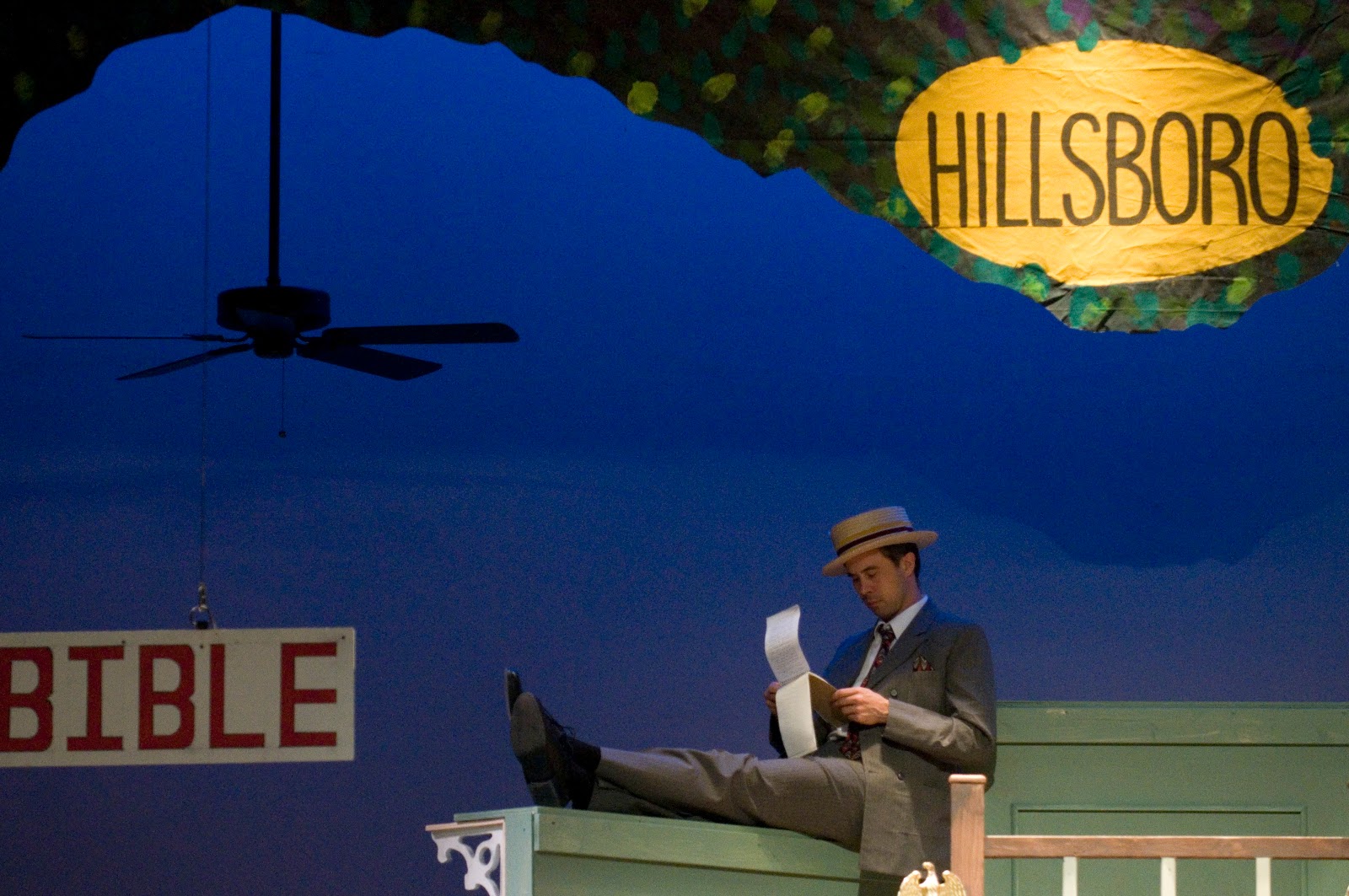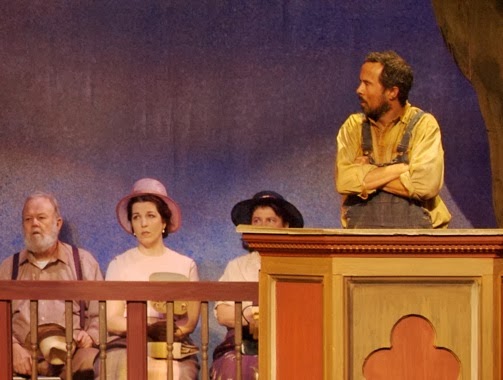Ebenezer Scrooge has been immortalized in popular culture over the years, from the earliest surviving screen adaptation — a British short film from 1901 — to last year’s Disney motion-capture animated picture featuring comedian Jim Carrey.
All could have provided a template for Terry Weber, a professional actor and instructor of various performance classes at the University of Tennessee who stars in this season’s production of the Charles Dickens classic, taking place at the Clarence Brown Theatre through Dec. 19.
Weber, however, discarded those who did the part before him, and in doing so makes the role entirely his own.
“I guess I didn’t worry too much about what other people had done and decided to work with whatever was given from the script,” Weber told The Daily Times this week. “I really like this adaptation a lot by Joe Hanreddy and Edward Morgan because it’s one that allows the transformation of Scrooge to be more gradual than some of the other adaptations that are out there.”
That transformation is at the heart of this year’s Clarence Brown production, an annual affair that remains true to the original Dickens story but, by all accounts, finds a new way to tell the tale every year. Such comparisons, however, are moot — because Weber takes the character of Ebenezer Scrooge and acts out his journey of transformation with an eye for both tradition and innovation.
“One of the dangers is that in the original adaptation, Scrooge has made his complete transformation at the end of Act 1 — but when he is finally able to feel again, you have to make certain that that’s not the end of the journey,” Weber said. “The feeling he gets at the end of Act 1 is mostly pain, and the pain isn’t necessarily where he wants to stay.”
That pain, however, is the motivation for the transformation that is at the heart of “A Christmas Carol.” When the production opens, Weber’s Scrooge has all the hallmarks of the class character and then some — stern, unrelenting in his devotion to making money, hard-hearted, flinty-eyed.
Weber, however, plays the part with a certain weariness of posture and expression that belies his gruff exterior. Like his dead partner, Jacob Marley — whose spectral appearance sparks the journey Scrooge will take with the three spirits of Christmas — he seems shackled with chains, albeit metaphorical ones. It’s a little thing, but it’s part of the beauty of Weber’s performance.
“One makes choices early in rehearsal that one ends up discarding by the time the show opens, and by the same token small discoveries are made after the show opens,” Weber said. “You discover how a moment or gesture can work; you look at the physical mask of the character and what kind of energy would be appropriate for him. I found myself thinking of those things — how the description of Scrooge as ‘squeezing, wrenching, grasping, scraping, clutching’ would affect how I held my hands and carry over as unconscious mannerisms in the character.
“It’s a long process of sketching a physical and vocal mask for the character. But you don’t want to be a slave to that mask either — you want to be in the moment for each performance.”
An actor, of course, is limited by certain things — the direction of the production, the performances of his fellow actors, the work of the behind-the-scenes crew and volunteers that make the play possible. In “A Christmas Carol,” Weber is in good company — aside from a few timid performances by a couple of the younger actors, the work in this year’s production is first-rate. Worth noting are the performances of Jens Rasmussen as the put-upon Bob Cratchit, who maintains a certain dignity while staring down the twin barrels of poverty and Scrooge’s neverending scorn; and Conrad Ricamora as Fred Scrooge, the nephew of Ebenezer and the optimistic yin to his uncle’s dour yang.
Although they don’t appear in front of the audience, the works of guest artist/Jim Kronzer, guest artist/set designer Katherine Rohe and guest lighting designer Beverly Emmons are spectacular. Rustic, warm and Victorian, their efforts serve as a backdrop that both enhances the story and draws the viewer in. The special effects are fantastic as well — Jacob Marley’s ghostly appearance and the Ghost of Christmas Yet to Come both are capable of inspiring fright in young audience members.
“It’s a blessing to be able to work with the design and production support at the Clarence Brown Theatre, which is the flagship professional theater in this area,” Weber said. “I’m humbled at the chance to work with such great designers and technicians and volunteers. We are blessed with the university’s support as well and their ability to bring in top-notch designers. As an actor, it’s always a great privilege to be a part of something like this. Theater is one of the most collaborative art forms there is.”
And “A Christmas Carol,” he added, is more collaborative than many other plays — especially when performed during the holiday season. Director Edward Morgan writes in the program notes about how “A Christmas Carol,” when first published in 1843, took America by storm and helped to elevate Christmas into the most revered holiday of the year; such a legacy, Weber said, is humbling to uphold.
“It’s a familiar story, one that’s universal in terms of renewal, redemption, rebirth — a journey someone takes from darkness into light, if you will,” he said. “For most people, regardless of how many times you’ve seen it, it still is an uplifting kind of journey and really is a part of our fabric in Western culture. It’s a story that sort of defined Christmas in Western culture from the mid-19th century through the present day.
“When you say Scrooge, everybody knows who you’re talking about, and when you’re playing the role, it definitely adds to it. There’s definitely a sense of being connected with the community and years of tradition of our culture that you don’t get otherwise, because it really is a story that reaches across the last 160 or 170 years. There’s a connection to our community here in 2010 Knoxville, but a sense of being connected to all of Western culture as well.”
By Steve Wildsmith of the Daily Times




